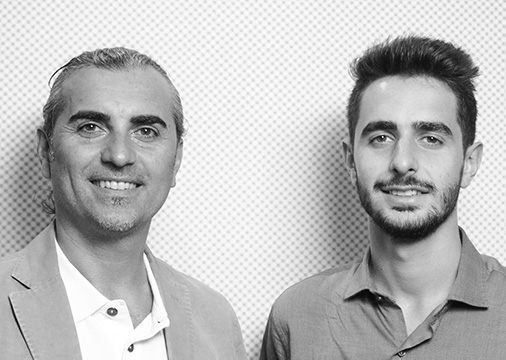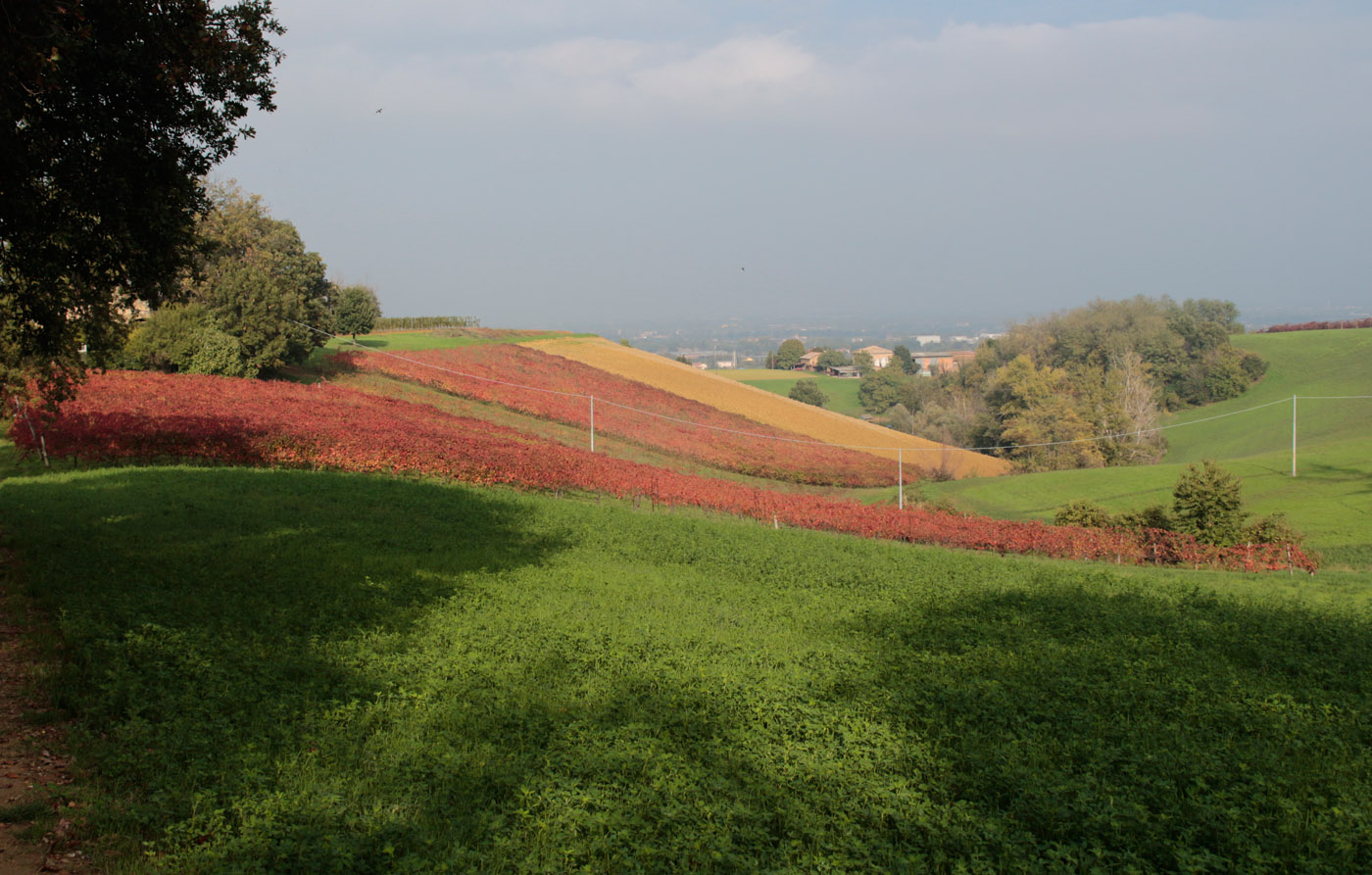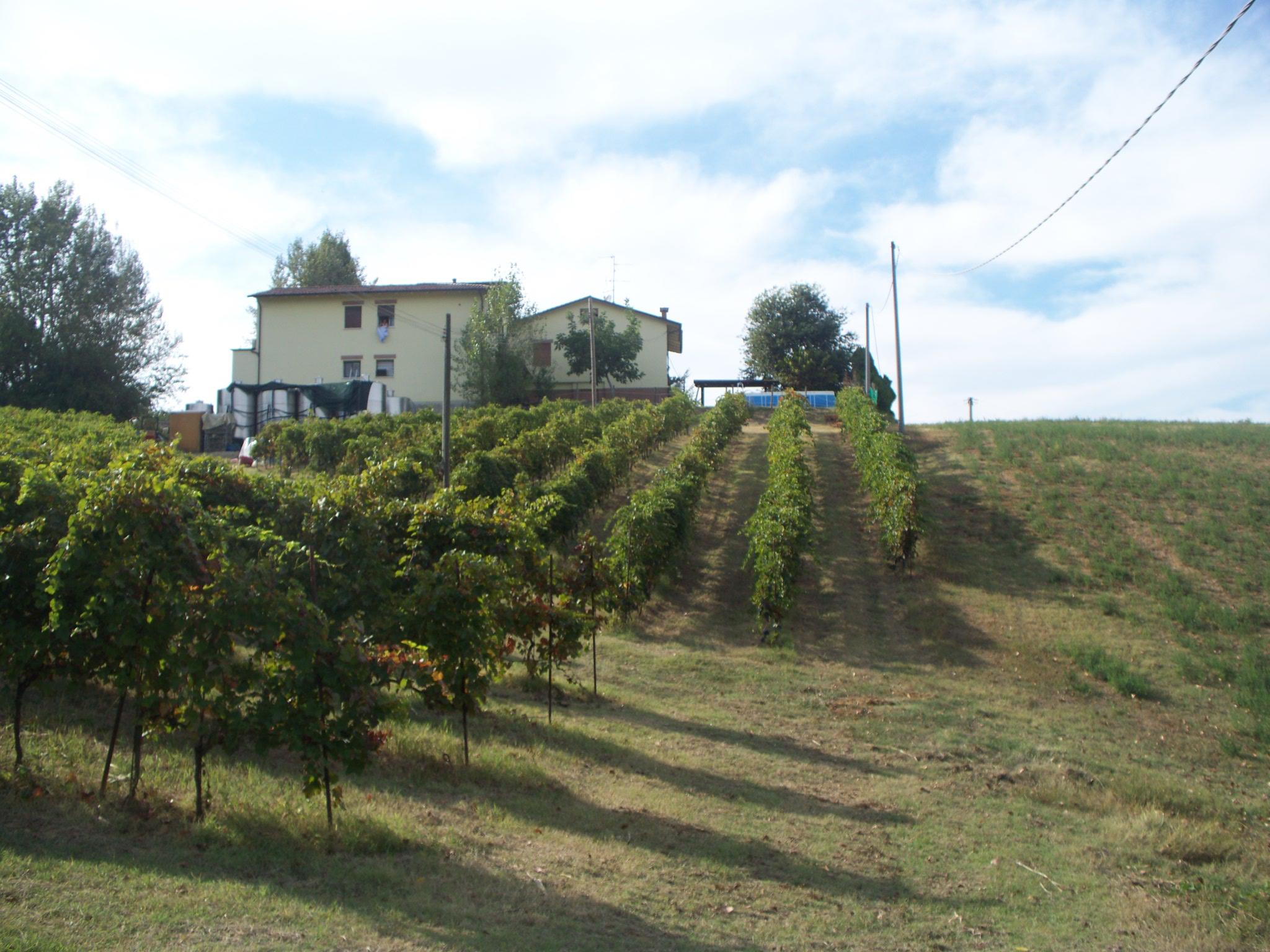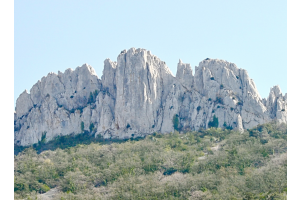
Lambrusco is both a red wine grape and a slightly fizzy Italian wine made principally from that grape. It has a long historic pedigree with evidence that it was popular in Roman times when it was highly valued for its productivity and high yields. It is mostly made in the Emilia-Romagna region in the north of Italy.
Lambrusco is famous as a sweet wine that was once the most imported wine in the US during the late 1970s and the 1980s - with a famous commercial (below) that had the once ubiquitous tagline "Riunite on ice…that's nice." Though out of fashion for many years, Lambrusco has become a modern favorite of the wine geek crowd.
Modern Lambrusco is a difficult wine to understand. There have been identified over 60 varieties of Lambrusco grapes, though most Lambrusco wines tend to be blends of several varieties. Today a new generation of artisan winemaker is making serious wine out of these grapes. Wines can vary greatly in terms of color, structure and level of acidity with much depending on the type of Lambrusco grapes are utilized and where they are grown.
Eric Asimov in the New York Times describes good Lambrusco: "They tend to be fruity and simple, with a dry, earthy, pleasantly bitter edge that shapes and channels the fruitiness."
Some Lambrusco wines are made using the traditional Champagne method and some are made using a method called method ancestral" or "pet nat" where yeasts are left in the bottle to create fizz. The third and most common but more traditional method for Lambrusco is called the "Charmat process" where a second fermentation is conducted in a pressurized tank. Most Lambruscos contain moderately low levels of alcohol, usually in the 10-12% range. Lambrusco is a young wine - so make sure when you purchase it you get the current vintage.
Grape Collective talks to artisan producer Fabio Altariva and his son Alessio (photo below right) from Fattoria Moretto about the evolution of Lambrusco.
Fattoria Moretto was founded in 1971 by Domenico Altariva. Originally the estate was more of a hobby with wine being sold in bulk mostly to friends. The estate is currently run by his sons Fabio and Fausto who pushed the business forward by building a new winery and bottling the wine themselves. Although the winery used natural methods since its inception it achieved official organic certification in 1997.

The vineyards of Fattoria Moretto are located in the heart of the hills of Castelvetro, near the town of Modena. The silt and clay soil produces fresh, mineral wines. The Altarivas also choose to highlight the local grape Lambrusco Grasparossa di Castelvetro by vinifying it alone, resulting in an intense, terroir-driven Lambrusco.
Fattoria Moretto is represented in the United States by pioneering wine importer Kermit Lynch.
“Moretto is to Lambrusco what Tempier and Terrebrune are to rosé. It reminds me of the best reds of Bandol and Tuscany, with herbs like thyme, and a sort of dusty mineral quality, like you find in some of the top Bordeaux and Tuscan wines.” - Kermit Lynch
Christopher Barnes: Tell us about your family estate.
Alessio Altariva: Basically we started working during the 70s, when the father of my grandfather bought the first vineyard. He used to transmit the passion to my grandfather, who bought the first two hectares of vineyard, which was a big quantity in that age during the 70s. Their company actually was born a bit later in 1991, when my father and my uncle joined the business. The company is called Fattoria Moretto and we have been working with organic agriculture during the last 20 years. Since 1996.
Is that usual in the region where you are?
It's getting usual nowadays I think, but it wasn't so usual I think during the 90s. We did a good job.
More people are seeing what you're doing and the quality and they're jumping on the bandwagon?
Yes, I think so. Nowadays I think it's even a title, being organic. That's why we decided not to write it on the label, because we would like to sell a good wine, before letting people know that we are working organically as well. I think it's something more to protect the environment as well.
Talk a little about Lambrusco as a wine. How would you describe it to somebody who has never tasted Lambrusco before?
Lambrusco is a big word actually. We go only, in Modena, we got four different DOC certifications. It's a really big word. Talking about Lambrusco Grasparossa, which is the one I produce, I would describe it as a happy wine first, but an elegant one at the same time.

It's sparkling and it has a little bit of sweetness to it, right?
Not too much actually. During the 70s, big companies producing Lambrusco used to export big quantities of that kind of wine, but it was only an industrial production, big quantities. Really sweet wine. It was like soft drinks. Really cheap as well. We are trying to let people know that Lambrusco is not only that wine. It can be as well something different, something looking more to the quality, to the terroir, to our land. Making something better.
You're part of a group of artisans who are focused on making more terroir-focused Lambrusco. How are your wines different from the industrial wines? How would you describe the differences?
Basically being organic now is a big difference. Being small as well. We are a really small company. We produce about 60,000 bottles a year, that is nothing. Only my family is working in this company. That's good as well. We try just to take what the land gives us and to put it in the glass.
Talk a little bit about the terroir.
Yeah, the terroir is really important for us. We are a bit out of Modena city. We are in the southern part, and we are only on the hills between 150-300 meters above sea level. We have different kinds of soil on our countryside. We have silt, we have clay, and we have limestone and sand as well. With our products, we try to, as I said before, we try to keep the flavor and the characteristic of the soil and to put it in the bottle as much as possible. With Monovitigno, for example, which is our cru, we decided to work with a single vineyard, which is really old. An ancient clone of Grasparossa, we found out.

How is Grasparossa different from other clones of Lambrusco?
It's different. The main characteristic you can find comparing Grasparossa to other Lambrusco is, first of all, the color, because Grasparossa, you can see as this really deep, intense violet color with a big froth on the top. Then tasting the wine, you can feel much more tannins, much more body than the other. A good acidity as well, but big fruit.
A lot of people when they think about Italian sparkling wine, Prosecco is the one that everybody knows. It's served by the glass at a million restaurants around the world. What did they do from a marketing perspective to become so famous? Do you think that's something that Lambrusco producers need to embrace in a way to elevate the public knowledge of the region?
Yes, I think we should let people know about our work. Prosecco is really famous now. They made such a beautiful job I think a lot of years ago. With Lambrusco, they made a big job, but not so good in my opinion. It's not well known, Lambrusco, now in the world, and we are fighting every day to let people know about our products that you can even find a quality Lambrusco with looking after the quality and not only after the quantity.
For somebody who hasn't tried Lambrusco before, how would you describe the taste of it?
Basically you will feel big red fruits' smell, perfume, coming out straightaway when you take the cork out of the bottle. The taste will be basically dry. We've have some sweet ones as well, but in my opinion, Lambrusco Grasparossa is a dry wine. You will feel all these red fruits, like strawberries, cranberries, and stuff like that. A medium body. A medium big body, talking about Lambrusco, and kind of fizzy, which is amazing in my opinion.

From a winemaking perspective over generations, have you changed or are you making the same wine the same way as your grandfather? Are you using technology? Are there different methods?
What we want to do basically is to mix together the innovation, talking about technologies, but looking at the tradition as well. Tradition because we just want to work with Grasparossa grapes 100%, which is the indigenous, local variety we have in our countryside. Innovation because we know that the best way to take out all these beautiful flavors from our land is to innovate a bit of course, using technology and new methods. That's why we decided to make only one fermentation with our products, using steel tanks, and not re-fermenting the wine in the bottles. It's a method they used to use a lot of years ago. Some are using it now. We think a bit of innovation is good.
Is it difficult balancing innovation with tradition?
It's not that difficult. We like to use new technology, as I said, but we want to keep the tradition at the same time. That's why we don't use any machine for the harvest. We prefer to keep using our hands. The harvest is hand-picking. Another important point about our company is the new product we have been making for the last six years is a rosé made with 100% grapes of Grasparossa, which is not so common. It's not a traditional product. It's an innovative product, but I think it's really good.














